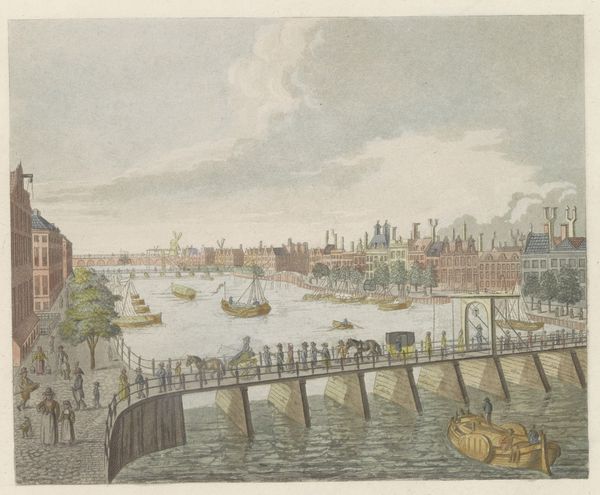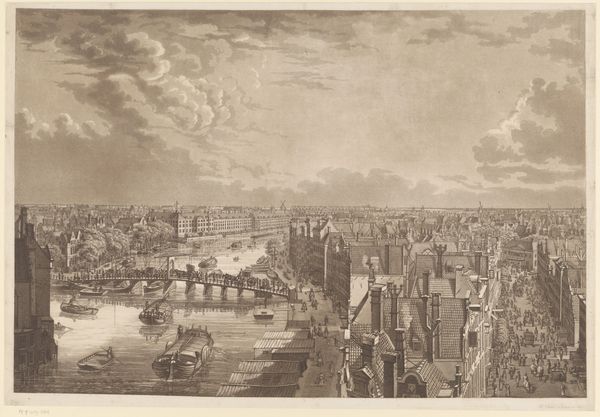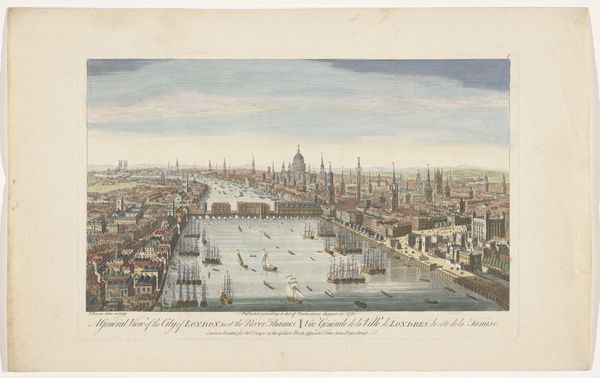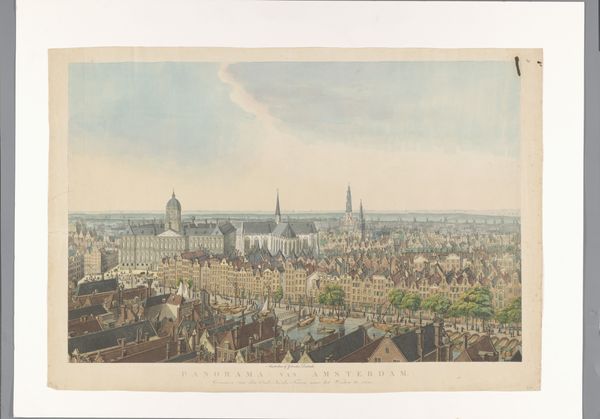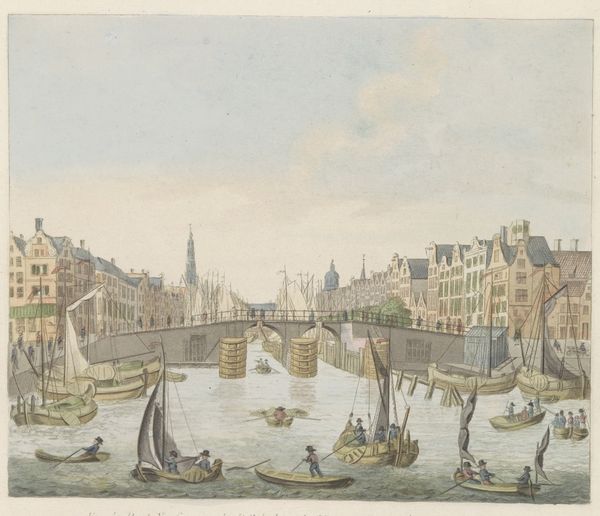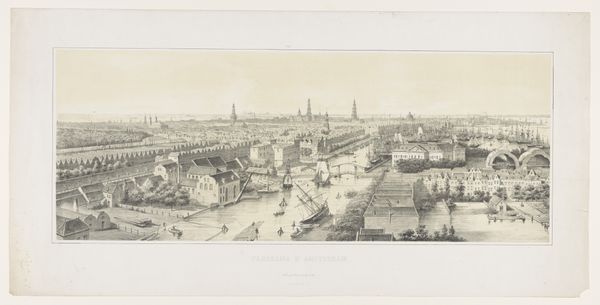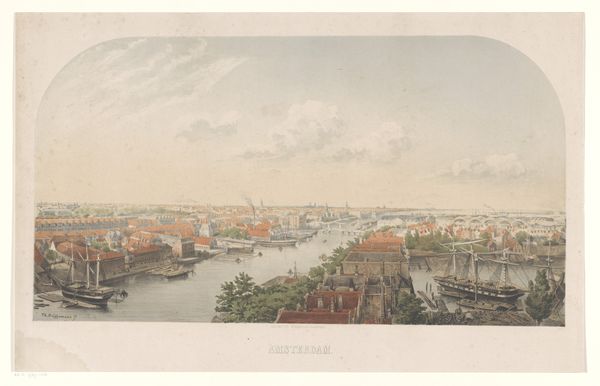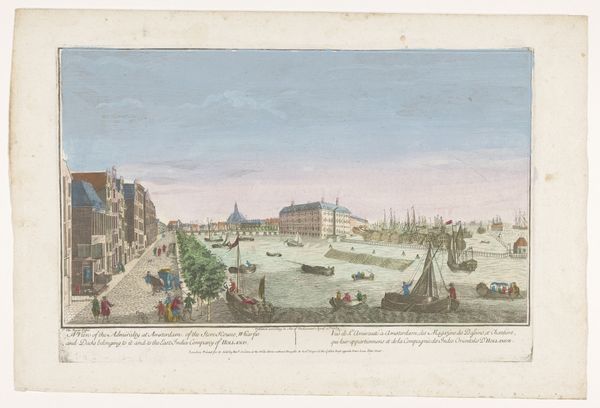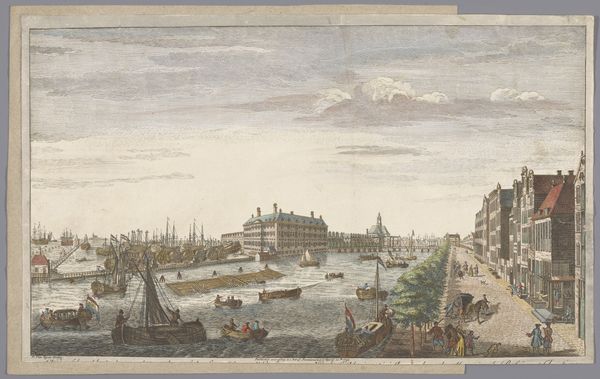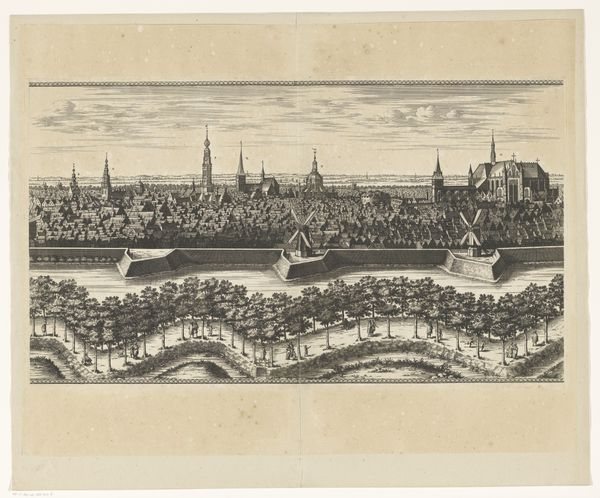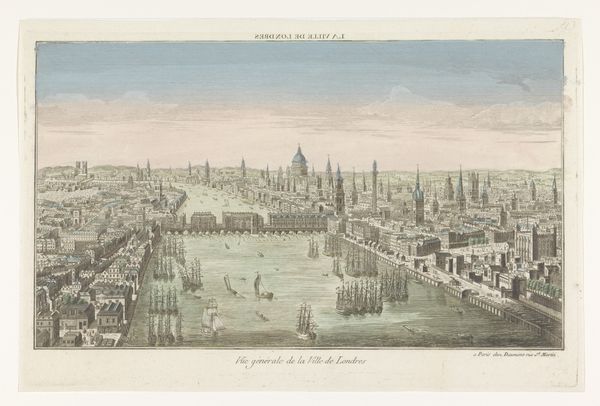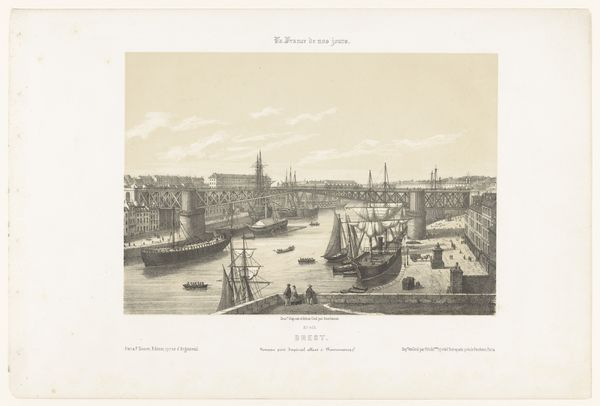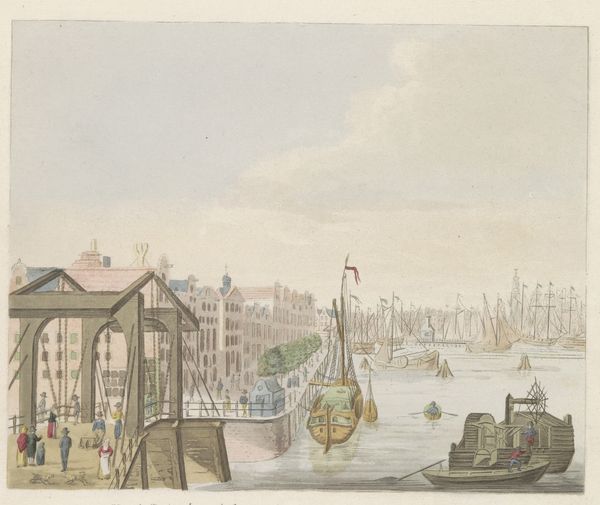
painting, watercolor
#
painting
#
landscape
#
watercolor
#
coloured pencil
#
romanticism
#
cityscape
#
watercolor
Dimensions: height 565 mm, width 795 mm
Copyright: Rijks Museum: Open Domain
Curator: From our collection at the Rijksmuseum, we have “View of the Amstel in Amsterdam from the Mint Tower,” a watercolor created by Willem van Senus between 1828 and 1851. Editor: The pale washes give it a dreamlike quality, as if seen through a misty window. There is an abundance of roofs crammed together, their clay and slate tiles forming a dense pattern. It makes me think of the collective labor required to build such a bustling metropolis. Curator: Yes, consider how the Mint Tower functions not just as a geographical marker but as a symbolic anchor. Its prominence is indicative of the historical significance of Amsterdam, the role it plays in both Dutch commerce and in the broader cultural imagination. The viewer gazes over a landscape dotted with tiny figures—the common people moving to and fro—participating in the market. Editor: Indeed. It’s crucial to acknowledge the material processes at play here, not just within the city's economic heart but also in Senus’ artmaking process itself. Watercolor allows for layering and transparency. Look closely at how he balances control with a certain fluidity, echoing the delicate balance required for maintaining Amsterdam’s extensive canal system. Curator: Water is a vital component for both painting and civilization. In that Romanticist moment, artists aimed to convey deep feelings and spirituality. Consider the emotional depth that Senus imbues the image with through carefully considered details – even in something as functional as a cityscape, he points to an ideal vision of Dutch identity. Editor: The boats are heavily laden, promising transactions for someone, wages maybe. The very act of transporting materials by water reveals so much. I’m left considering the unseen hands that fueled this trade, the material foundation of a thriving port city visualized in the delicate strokes of watercolor. Curator: Exactly. Art can also be a historical record and social critique. This single image represents commerce, navigation, history, community, and national identity. It is no wonder it’s one of our most admired artworks. Editor: An artwork about how labor shaped not only the city's economy but also its social fabric, a powerful image of Amsterdam told through the details of the materials.
Comments
No comments
Be the first to comment and join the conversation on the ultimate creative platform.
